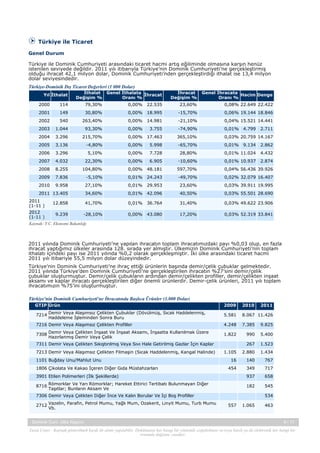End Of School Desegregation Order: Implications And Future Of Integration

Table of Contents
Historical Context of School Desegregation Orders
The history of school segregation in the United States is deeply rooted in systemic racism and inequality. Landmark Supreme Court cases, most notably Brown v. Board of Education (1954), declared state laws establishing separate public schools for black and white students unconstitutional. This ruling, while monumental, did not automatically lead to integrated schools. Desegregation orders, issued by federal courts, became crucial instruments in dismantling legally mandated segregation and addressing the historical inequalities embedded in the education system.
While desegregation orders led to some progress, the implementation process was fraught with challenges. Resistance from various quarters, including individuals, communities, and even some school officials, significantly hindered the pace of integration. The legacy of segregation continues to impact school districts today.
- Key Supreme Court cases impacting school desegregation: Brown v. Board of Education, Green v. County School Board of New Kent County, Milliken v. Bradley.
- Examples of successful desegregation initiatives: Court-ordered busing programs, magnet schools designed to attract diverse student populations.
- Obstacles encountered in achieving desegregation: Resistance from white communities, insufficient funding for integrated schools, and the persistence of de facto segregation.
Immediate Implications of the Order's End
The end of a desegregation order carries significant immediate implications. The most pressing concern is the potential for a resurgence of racial and socioeconomic segregation in affected school districts. This re-segregation could lead to a widening of the achievement gap, as schools with predominantly minority student populations often lack the resources and support available to more affluent, predominantly white schools. The impact on school demographics and diversity is equally concerning, potentially undermining social cohesion and intergroup understanding.
- Potential increase in racial and socioeconomic segregation: Neighborhoods with concentrated poverty often correlate with under-resourced schools.
- Consequences for academic performance and resources: Unequal funding and resource allocation can lead to disparities in teacher quality, curriculum, and extracurricular activities.
- Impact on school diversity and social cohesion: Lack of diversity in schools can limit students' exposure to different perspectives and cultures.
Long-Term Effects on Educational Equity
The long-term consequences of ending desegregation orders are potentially far-reaching. A return to more segregated schools risks exacerbating existing inequalities and perpetuating the cycle of poverty and disadvantage. The achievement gap between different student groups could widen significantly, leading to disparities in college enrollment, career opportunities, and overall social mobility. Moreover, segregated schools can hinder the development of positive intergroup relations, creating a climate of misunderstanding and prejudice.
- Long-term trends in educational inequality: Data shows a persistent correlation between school segregation and achievement disparities.
- The role of school segregation in perpetuating social inequalities: Segregated schools often reinforce existing socioeconomic and racial divides.
- Strategies to mitigate the negative effects of re-segregation: Increased funding for under-resourced schools, targeted interventions to support disadvantaged students, and promoting diverse school communities.
Strategies for Promoting Integration in the Future
While court-ordered desegregation has played a significant role, alternative approaches are crucial for achieving meaningful school integration in the future. These include implementing magnet schools, creating inter-district transfer programs, and promoting equitable funding and resource allocation across all schools, regardless of student demographics. Community engagement and parental involvement are also essential in fostering a supportive environment for integrated schools.
- Magnet schools and other innovative integration strategies: Magnet schools, offering specialized programs, can attract students from diverse backgrounds.
- The importance of equitable funding and resource allocation: Ensuring all schools receive adequate funding is vital for creating equal opportunities.
- Community-based initiatives to support integrated schools: Community involvement can help build strong, inclusive school communities.
The Role of Affirmative Action in School Integration
Affirmative action policies, designed to address historical disadvantages, remain a contentious issue in the context of school desegregation. Proponents argue that affirmative action is necessary to counteract the lingering effects of segregation and create a more equitable education system. Opponents raise concerns about reverse discrimination and the fairness of using race as a factor in admissions decisions. The legal and ethical considerations surrounding affirmative action require careful and ongoing debate.
Conclusion
The end of this school desegregation order highlights the fragility of progress in achieving educational equity. The potential for increased segregation and the widening of the achievement gap underscore the urgent need for proactive measures to promote school integration. We must ensure that all students, regardless of race or socioeconomic background, have access to a high-quality education. To achieve this, we must continue the conversation about school desegregation, advocate for policies that promote educational equity, and support initiatives that foster diverse and inclusive school communities. Become an active participant in ensuring a future where all children have access to quality education; continue the conversation about school desegregation and its impact on our communities. Let's work together to build a future where school desegregation is a relic of the past, replaced by truly integrated and equitable schools for all.

Featured Posts
-
 Funding Crisis Puts Indigenous Arts Festival At Risk
May 02, 2025
Funding Crisis Puts Indigenous Arts Festival At Risk
May 02, 2025 -
 Dallas And Carrie Star Dies Amy Irvings Tribute
May 02, 2025
Dallas And Carrie Star Dies Amy Irvings Tribute
May 02, 2025 -
 Mwqe Bkra Ykshf Akthr 30 Laeb Wmdrb Mkrwhyn Fy Tarykh Krt Alqdm
May 02, 2025
Mwqe Bkra Ykshf Akthr 30 Laeb Wmdrb Mkrwhyn Fy Tarykh Krt Alqdm
May 02, 2025 -
 France Triumphs Over Italy Duponts Masterclass Performance
May 02, 2025
France Triumphs Over Italy Duponts Masterclass Performance
May 02, 2025 -
 Bae Orta Afrika Cumhuriyeti Ticaret Anlasmasi Iki Uelke Icin Faydalari
May 02, 2025
Bae Orta Afrika Cumhuriyeti Ticaret Anlasmasi Iki Uelke Icin Faydalari
May 02, 2025
Latest Posts
-
 Benson Boone Responds To Harry Styles Copying Accusations
May 10, 2025
Benson Boone Responds To Harry Styles Copying Accusations
May 10, 2025 -
 How Harry Styles Reacted To A Hilariously Bad Snl Impression
May 10, 2025
How Harry Styles Reacted To A Hilariously Bad Snl Impression
May 10, 2025 -
 Harry Styles On That Awful Snl Impression His Honest Response
May 10, 2025
Harry Styles On That Awful Snl Impression His Honest Response
May 10, 2025 -
 Harry Styles Snl Impression The Reaction That Broke The Internet
May 10, 2025
Harry Styles Snl Impression The Reaction That Broke The Internet
May 10, 2025 -
 Snls Impression Of Harry Styles His Reaction And The Backlash
May 10, 2025
Snls Impression Of Harry Styles His Reaction And The Backlash
May 10, 2025
